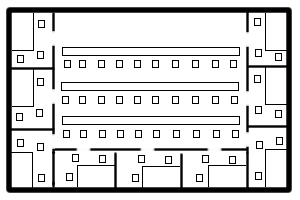This is essentially a summary of Ben Grey’s and Jeff Arnett’s session on podcasting from ASCD 2010. Pretty useful session, I liked the summary of why students should be podcasting.
Podcasting is a great way to give a voice to your students. Students are often connected digitally at home for most of the day, but "[w]hen they come to school they have to power down their devices" (Ben Grey, 2010, ASCD). They come to school and shut themselves off because they do not have any motivation to learn in an environment that doesn’t respect their opinions. Giving students a voice through podcasting, or really any other kind of media, will help them build a connection to your school and feel like they belong. Students need ownership of the process for it to be authentic.
Another really important aspect that podcasting adds to your school is the element of audience. When students create an assignment and give it to their teacher, they spend a lot of time and effort to create an artifact which is only going to be seen by an audience of one, this is very frustrating for students (Ben Grey, 2010, ASCD). If you allow students to podcast their learning, suddenly they have potentially the whole world as their audience. Imagine how a student feels if they learn that their work has been viewed by thousands of people!
It is incredibly easy to create a podcast today. For a school, one can either use some free or cheap online services, or use your local web server to serve the podcast files. The distribution of the podcast feeds can be done through iTunes. There are many, many tutorials on how to create a podcast, so once you understand WHY podcasting is useful, getting started for yourself should be fairly easy.
The important part of the podcasting process is the process itself. Although the end product should be polished and sound (or look in the case of video podcasting) professional, from a learning perspective what the students go through to create their podcasts is most important. Podcasting involves outlining, processing, editing, reviewing, all of these are part of the writing process. As students learn how to create high quality podcasts, they will see their personal literacy increase. Instead of students being completely stuck at the writing stage of literacy, students can learn the other important literacy skills they need.
Podcasting allows your school to build a stronger and wider community. Many initiatives today are talking about how important a school is within the context of the surrounding local community. Having an entire community working on creating a podcast means that everyone is involved in the process, and everyone feels ownership for the material. Although you might wonder if there is greater danger in allowing students to post information through podcasts, one needs to remember that students already have access to these tools! They already have the ability to post information to a wider community, it is much better that they learn how to do this responsibly through your school.
Consider setting up a podcast for your school today, and make sure that students have ownership of the process. You won’t regret the results.
 A typical classroom might look something like this. The problem with this arrangement that I see is that almost no one actually works under this arrangement. Why not? It’s distracting! this is similar to the layout in a lot of teacher staff rooms, and it is my experience that very little work happens in the staff room when it is full. There are too many people around and too many things to see and do.
A typical classroom might look something like this. The problem with this arrangement that I see is that almost no one actually works under this arrangement. Why not? It’s distracting! this is similar to the layout in a lot of teacher staff rooms, and it is my experience that very little work happens in the staff room when it is full. There are too many people around and too many things to see and do. So I propose a different arrangement. Here’s a possible variation that might work. The big difference here is, students have their own workspace. They can work in their small groups with a few students working in the middle section, possibly under the guidance of the teacher. They have much fewer distractions available to them.
So I propose a different arrangement. Here’s a possible variation that might work. The big difference here is, students have their own workspace. They can work in their small groups with a few students working in the middle section, possibly under the guidance of the teacher. They have much fewer distractions available to them.